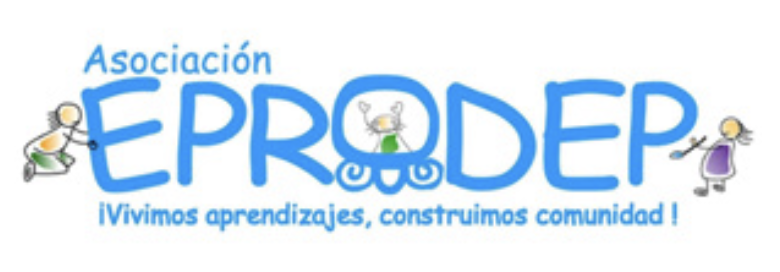
Case Study: EPRODEP
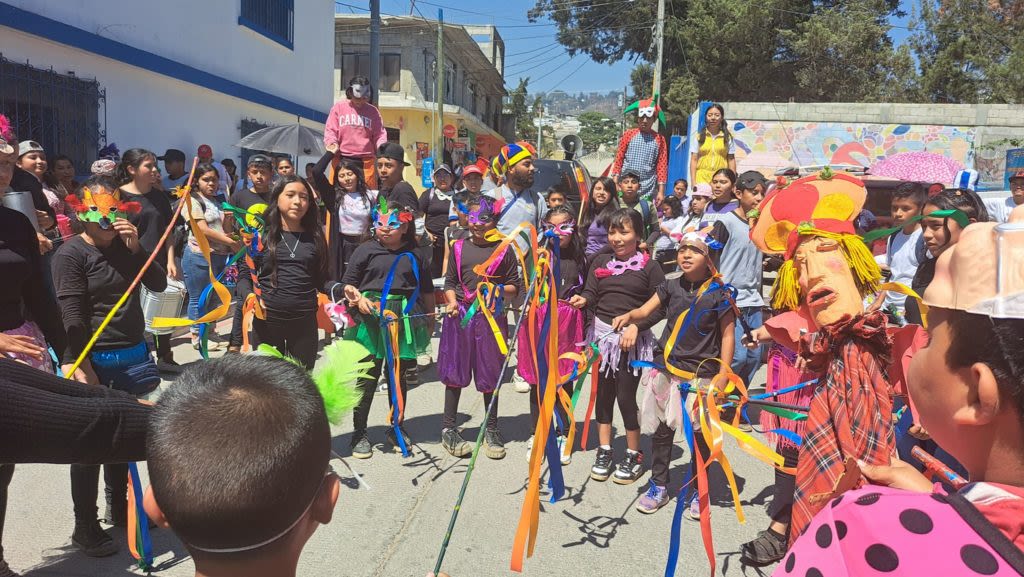
Community against urban precarity and violence
It was the nineties in Ciudad Quetzal, one of the numerous urban developments that sprouted around the capital city. It was filled with unexpected faces and new neighbors: immigrants from different regions of the country searching for opportunities, expelled from their original lands by poverty and the civil war that was about to end. However, the hope of migrant families to escape from exile and conflict inevitably clashed with the urban course of Ciudad Quetzal: precarity and violence.
The urban growth of Ciudad Quetzal was disorganized. The provision of services and basic resources for a dignified life did not keep pace with population growth.
In this context, government and municipal authorities were absent. They were not interested in serving populations living in territories qualified as settlements, urban signs of social inequality. Marginal, invading migrants. No centralized and authoritarian state, especially one that was then at war with its people, would be concerned about the fundamental rights of vulnerable populations. Without planning or concert, Ciudad Quetzal proliferated.
Precarity in disorder infiltrated the city. There were hardly any job opportunities, forcing inhabitants to look for work in the capital. Public services barely reached new homes if they were miraculously lucky to receive them. Education was nonexistent without public schools or training centers for the youth. A youth with few chances to succeed, forgotten in an unequal city.
In this precarity, the most vulnerable families were mainly composed of single mothers. In their family stories, they shared husbands who escaped their paternal role, children seduced or murdered by urban violence. Some mothers ignored maternal upbringing to work out of economic necessity. Others consciously took on the dual task of worker and caregiver. Some died, leaving children and youth orphaned.
Youth found in urban violence a form of expression and belonging. The maras or gangs were a youthful response to social inequality. They governed the streets of Ciudad Quetzal, cracking urban life and the sense of community. In the church, two or three masses were celebrated with somber frequency for the murder of a young person. In those violent times, the youth were at war with themselves.
In Ciudad Quetzal, the Catholic Church had a fundamental presence. Parish priests, witnesses to violated youth, rampant crime, and urban precarity, built together with families and youth a way of living religion in community: the Basic Ecclesial Communities (CEB). The essence of the CEBs is to bring the church to community service and outreach.
Despite this context of urban precarity and violence, of state indifference, a part of the community decided to take their own destiny into their own hands in Ciudad Quetzal. The union between the CEBs and family mothers led in 1992 to a commitment to their city, their youth, and their lives. A commitment called the Association for Studies and Projects of Popular Effort (EPRODEP).
The director of EPRODEP, Mirna Rivas, about the organization's work, the importance of post-pandemic educational recovery through the Recovering Education in Central America: Activating Networks and Associated Groups (RECARGA) initiative and the experience with the guided case study by Population Council Guatemala.

General history of Ciudad Quetzal
Before delving into the history of EPRODEP, it is necessary to know the history1 of Ciudad Quetzal, which is similar to that of many other marginal and peripheral cities. As we have told its history, it has been marked not only by a lack of planning, poverty, exclusion, and state abandonment but also by violence.
On the outskirts of the municipality of Guatemala, Ciudad Quetzal is located in the south of the municipality of San Juan Sacatepéquez.
San Juan Sacatepéquez has been inhabited since the pre-Hispanic period; it is of Kaqchikel origin. During the colonial era, San Juan Sacatepéquez was a village of indigenous people that provided forced labor to the city of Guatemala. Currently, the population is indigenous and mestizo. This is the result of migratory processes and displacements from the so-called "invasions."
Ciudad Quetzal has grown rapidly and disorderly, resulting in basic services and precarious living conditions and the emergence of other phenomena such as urban violence. At the same time, it experiences considerable economic and demographic growth. This has been a product of internal displacement processes from the 1976 earthquake and the civil war that forced thousands to flee violence and repression. During this period, the settlements and expansion of the urban periphery gained strength.
In 1987, the Basic Ecclesial Communities2 emerged in the parish of Jesús Nipalakin in Ciudad Quetzal. The CEBs began to exist in the 1960s. They are forms of political and social organization in communities of poor and marginal cities. Founded on liberation theology, in the CEBs, the Catholic faith and spirituality are inseparable from the commonly vulnerable, unjust, and violent daily life of the urban sectors in precarity. To date, there are 43 organized CEBs in Ciudad Quetzal.

Fuente: Instituto Nacional de Estadística Guatemala (2018).
Fuente: Instituto Nacional de Estadística Guatemala (2018).
Currently, it is called a bedroom city. Most of the population must commute daily to the city of Guatemala for work reasons. The families of Ciudad Quetzal are low-income workers who work in industry and commerce with limited access to education and job training. For this reason, many young people must enter the low-paying labor market. Childhood and adolescence are also pushed to work in precarious and even dangerous conditions in the agricultural sector or firework manufacturing, which also limits the possibility of continuing their studies.
A significant part of the population only has primary level education as the highest level of studies. Likewise, a considerable percentage of young people between the ages of 15 and 29 have not reached the primary level. On the other hand, young people must travel to the urban area of the municipality (or even to the capital city) to access diversified education, as that is where the service is concentrated. As the educational level increases, the number of establishments decreases. It is not surprising that access to university education is even more limited.
In 2018, the municipality ranked 7 out of 17 municipalities regarding the incidence of accumulated crimes at the departmental level. (Cristosal 2021)
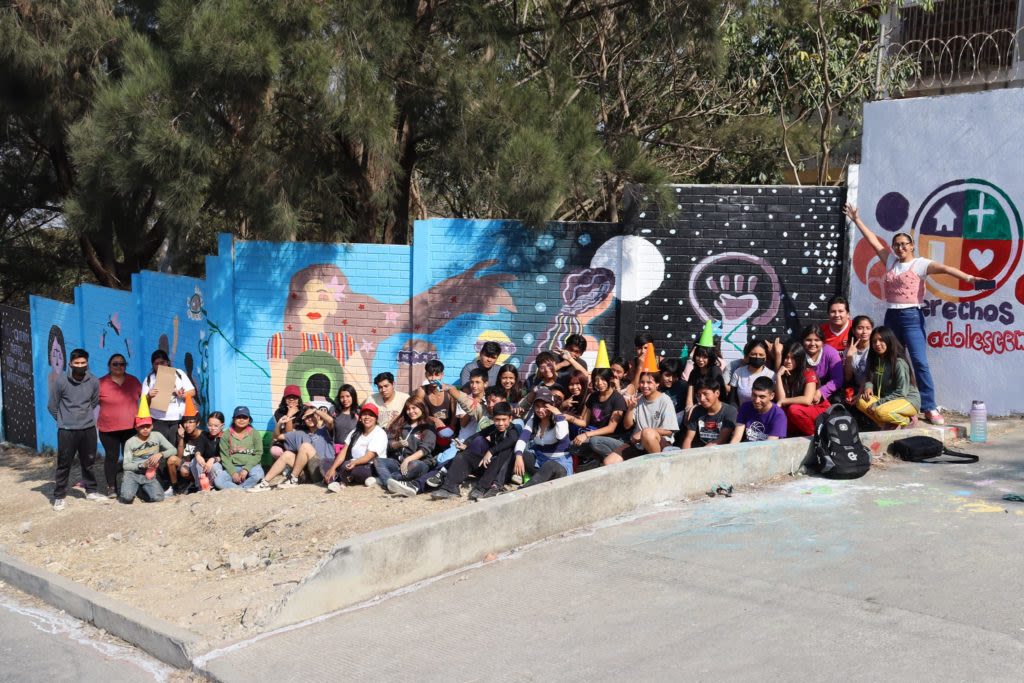
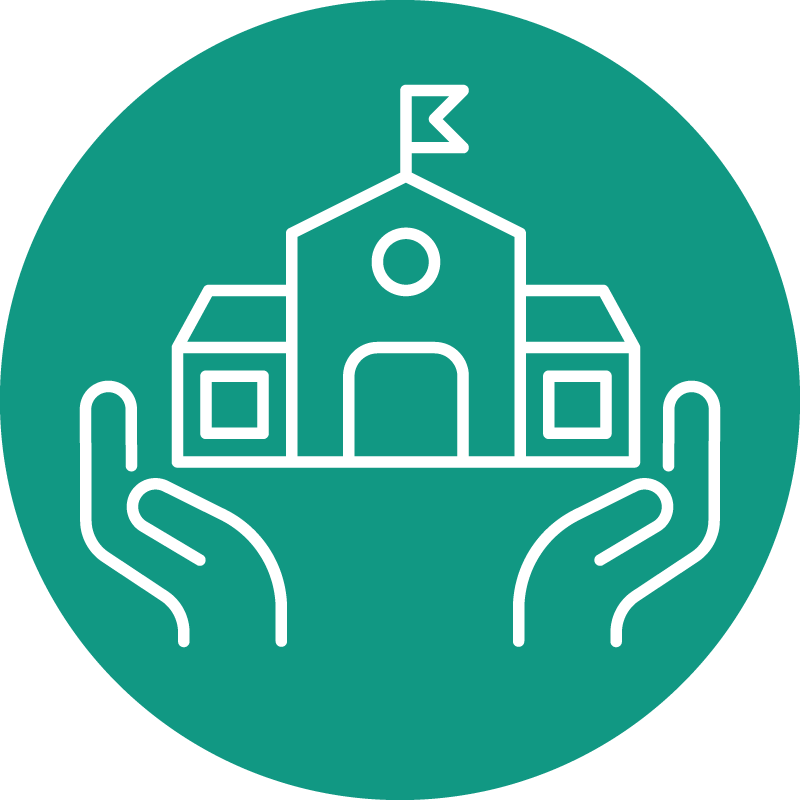
The biginnings of EPRODEP
The history of EPRODEP3 reflects the struggle and trajectory of a committed group to educate its youth, giving them a new and different future from the violent, unjust, and miserable fate they were living in Ciudad Quetzal. It is also the story of a community that, through its own work and action, overcame difficulties to build itself. EPRODEP is the narrative of a hope that does not give up in the face of adversity.
Maternity and religion facing urban inequality
In the early nineties, education in Ciudad Quetzal was in the same plight as other services: scarcity. Without state urbanization plans that accounted for a territorial arrangement of the city, only the efforts of the inhabitants remained to make do in acquiring water, light, work, and education.
Working and educating were external needs of Ciudad Quetzal. The EPRODEP team recalls that at that time, only one public school was functioning. The youth, those lucky enough to opt for an education, had to move to the capital or other sectors to study. They also did not have sufficient economic resources if the idea was to study in private centers.
Similarly, the situation was the same with employment. Forced to look for work at such an early age due to urban precarity, they had to go to other places due to the lack of job opportunities in their Ciudad Quetzal.
Another mishap for the youth was urban violence. The gangs were widespread in Ciudad Quetzal, entrenched in the streets by force, and threatening the inhabitants with panic. Their main victims were young people, either recruited into the ranks of the gangs or annihilated in the conflict for control of the city.
The youth of Ciudad Quetzal were trapped between violence and necessity.
Some mothers of these young people knew their circumstances closely. They refused to abandon them to the unfortunate fatalism imposed by Ciudad Quetzal. They desired a better future for their children and, therefore, their community.
These mothers had been participating in the CEBs for years, initiated from the parish of Jesús Nipalakin. These small societies, guided by fathers, incorporated values and principles of liberation theology: faith at the service of the community. Thus, the fathers and other participants knew, thanks to their community approach, the adverse conditions of the youth in the city.
It was thus that maternity and Catholic faith came together to propose from the CEBs spaces where participation is democratic and collective, an educational model for their youth without opportunities. Thus, EPRODEP was born in 1992.
Educational beginnings
The idea of an educational institute did not officially materialize until 1994, when EPRODEP was legally registered. Meanwhile, the real institute was being formed.
The absence of public educational services and the geographical remoteness of rural communities were adversities that EPRODEP strove to overcome. They had a clear profile in mind: young people without study, workers by necessity, with overage. Thus, they directly approached these young people in their own homes, told them about the project, and invited them.
Many of the students lived in the communities around. The father and one of the teachers would pick them up. They wanted them to go to study by any means necessary.
At first, the educational services they offered were two. First, education for middle school. EPRODEP received enrolled youth in a community hall of Ciudad Quetzal where they were divided based on the three grades of basics. However, they had a difficulty: the education of basics was not officially endorsed by the Ministry of Education (MINEDUC). Therefore, the alliance with the public institute Carolingia was fundamental in those beginnings. Through this institute, they granted certificates and diplomas with official approval.
Second, education for vocational and technical training. In EPRODEP, they were aware that despite the importance of dedicated education, work was necessary for the youth due to urban precarity. Therefore, they opened courses and imparted labor training content. The intention was to technically educate young people who could navigate the labor world and from whom entrepreneurship projects for the community could arise.
At that time, the community viewed EPRODEP's work with suspicion. They observed excluded and poor youths miraculously gathering to study under the sponsorship of a group of teachers who, for some reason, were trying to educate and, unprecedentedly, understand them... In an era when being young was dangerously synonymous with being a gang member, EPRODEP was judged as "the institute where gang members went to study." It is worth noting that urban violence shatters any sense of community in a city.

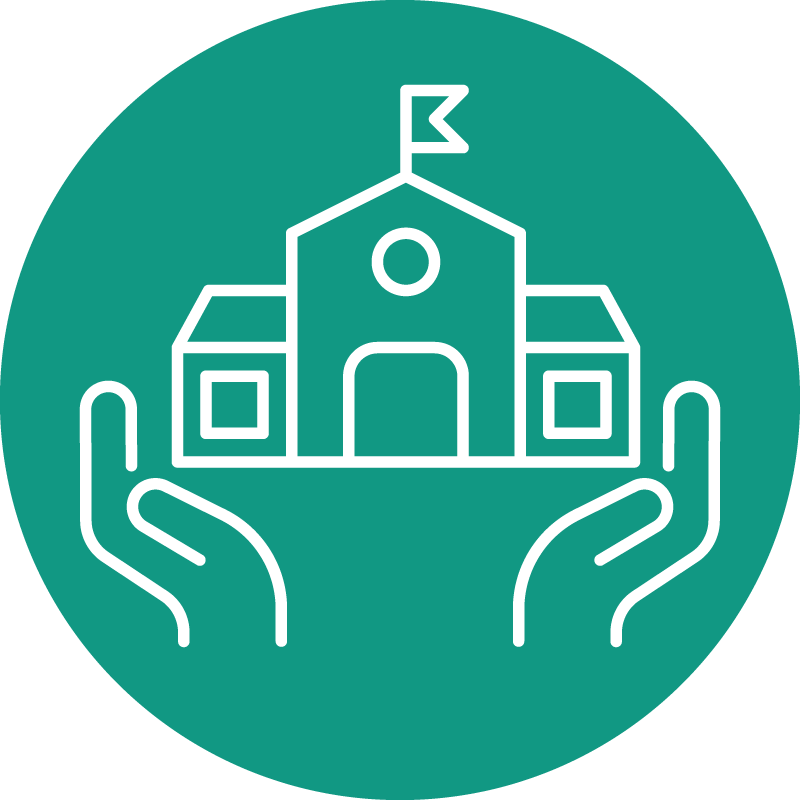
The educational consolidation of EPRODEP
From the beginning, EPRODEP was clear about the idea of making a comprehensive educational institute4. That is, to have, as far as possible, the range of official academic grades: from primary to high school. In addition, to offer a curriculum with alternative and non-traditional knowledge.
For example, the technical and labor training program was strengthened as the years went by. In 1999, MINEDUC finally officially endorsed the technical careers of EPRODEP. Thus, the program was consolidated into a training center that was fully fortified with private classrooms by 2002.
On the other hand, without forgetting the context in which they lived, it was unavoidable to consider a scholarship program to financially support the enrolled and aspiring youths. Thus, in 1999, this program began. They aimed at youth profiles of extreme risk and vulnerability due to poverty or violence. The program continues to this day.
Regarding the official grades, in 1996, they launched high school. It started with a project in the village of Chianí, adjacent to Ciudad Quetzal. The EPRODEP team made visits to the young people of the village to impart courses and subjects typical of high school. They were conducted exclusively on weekends as an adaptation to the labor dynamics of the students. Two years later, a similar program was incorporated into the EPRODEP institute.
At the beginning of the new millennium, a group of teachers talked about the dream of providing primary education at EPRODEP. These teachers were graduates of the organization, part of the promotions that received basics. They wanted to give back to EPRODEP the education they would never have achieved without the organization. They also believed that the lack of primary education was an important need, especially in a city with few educational services. One of the teachers recalled the process of conceiving primary education at EPRODEP:
"In 2000, we returned to EPRODEP and made the proposal for pre-primary and primary education. We seemed like library mice, spending entire days searching for methodological proposals that supported what we wanted to do. We researched why so many children left and did not return, the issue of overage, what happens with the working children who had to go fetch firewood, make tortillas, and countless things, or stay home caring for siblings; one case of a mother of four girls who passed away. We wanted to respond to the problems seen in schools: a traditional education. We were caged; we couldn't have an opinion; we wanted a different model. From the experience plus the knowledge we acquired, we brought ideas and proposals that helped us establish a pedagogical model through play, emotions, and social relationships."
After two years of proposals and discussions, in 2002, EPRODEP initiated the primary grade. As with basics, while they finalized the procedures to officially recognize primary education, initially, they needed the alliance of a public school in Ciudad Quetzal to issue certificates and diplomas to EPRODEP students.
On the other hand, like the rest of the projects and programs of the organization, primary education had the foundation of popular education, an alternative to the traditional system of public education. We have alluded to this pedagogy so far, but in the next chapter, we will describe it in depth.
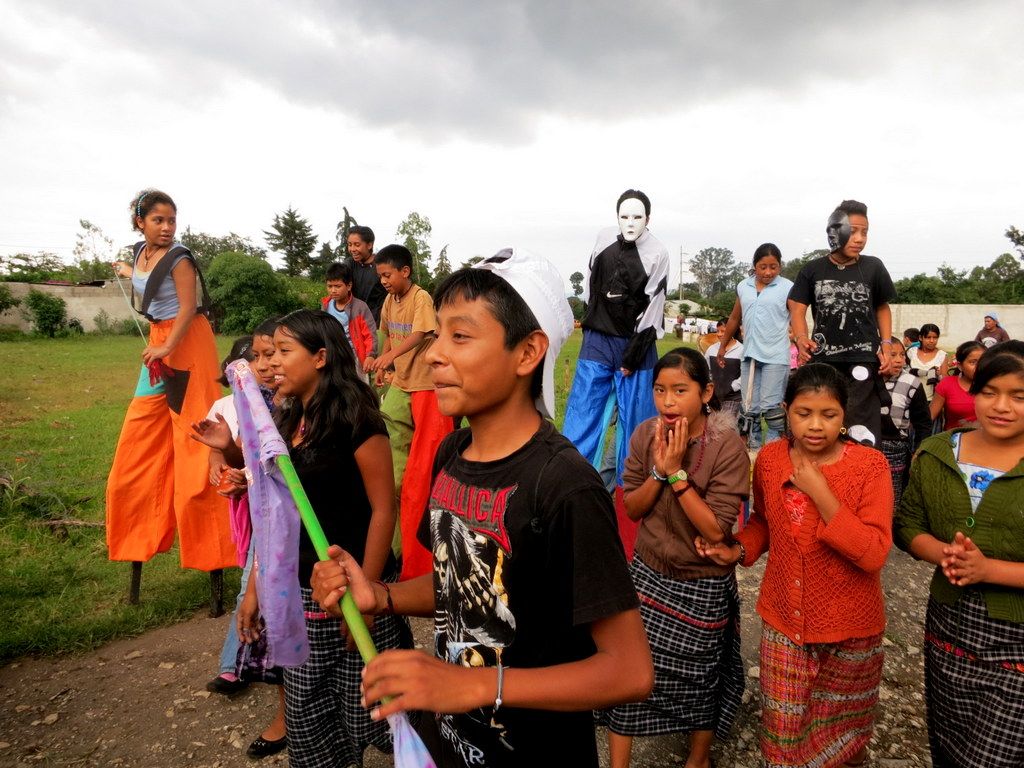
The popular pedagogy of EPRODEP
The popular pedagogy is idiosyncratic and fundamental to the history of EPRODEP. It has roots that go beyond the foundation of the institute. The early influences come particularly from the principles and values practiced in the Basic Ecclesial Communities (CEBs).
In the CEBs, democracy and collectivity are essential. Therefore, there are no sharp hierarchies among the members; assemblies are held where everyone has a voice and vote, the importance of group labor is valued, and religion is linked to and serves the social reality.
On the other hand, as explained by a priest who participated in the foundation of EPRODEP, the CEBs were based on "popular education" to express and teach ideas, knowledge, and practices regarding social reality, the religious work, and above all, the construction of peace.
Hence, the pedagogy of EPRODEP was formulated from the beginning with the notions and fundamentals of popular education.
As time passed and new projects emerged, the EPRODEP team strengthened the initial programs and curriculum on one hand, and on the other, added innovative frameworks and educational methods, making it a unique, particular, and distinctive pedagogy.
A horizontal education
One of the fundamental principles of EPRODEP education is horizontality. It is present in all the pedagogical dynamics of the institute.
The relationship between students and teachers is not marked by a traditional hierarchy. Rather, there is a willingness to listen and talk with the student, to give room to their own thinking and expression5, to work and attend closely to learning.
It is especially noteworthy that in EPRODEP, young people not only receive guidance and learning but are also educators for their peers. The EPRODEP curriculum has a lot of formative content; that is, to make young people subjects with labor, creative, and political autonomy, as the intention is to form leaders. Thus, they give space and opportunity to young people as students or graduates to develop workshops on subjects and topics in which they were trained, both in EPRODEP and in other places. Also, in the institute, they believe that it is a communal practice because it is about returning by training a series of leaders and services that will strengthen the community.
In EPRODEP, horizontality also implies inclusivity. On one hand, they consider within their pedagogical philosophy the importance of multiple intelligences. They believe that the traditional education of public schools and most private establishments cares about few types of intelligence and educates and evaluates teaching under their limited criteria. Therefore, they observe that young people, despite having potential in specific subjects and knowledge, are undervalued and misunderstood because they do not start from a diversity of intelligences. Thus, in EPRODEP, they believe it is necessary to listen to and understand the young person from their own perspective.
On the other hand, EPRODEP has paid special attention to the enrollment and teaching of what they call, young people with functional diversity. From the beginning, they had students with disabilities on their roster. It has been vital for these young people to have an institute like EPRODEP, where they find education and, above all, safe spaces that they have rarely or never received from society and family.
Culturally, a disability is a curse. It is hidden, sacrificed; thus, it is made invisible. The society is not prepared to accompany children with functional diversity. Our cases are growing in the community; they are growing. The system rejects them, society rejects them. It is difficult how a teacher in a school with 50 kids is going to attend to a child with autism.
Of course, it has not been easy for the EPRODEP team as they have faced the bureaucracy and discrimination of MINEDUC, as well as the social adversities from the outside, which are unfortunately common in unequal urbanizations like Ciudad Quetzal.
From play and art
In 2002, EPRODEP partnered with Caja Lúdica, marking the start of a productive and fundamental alliance. Through the trainings and guidance of Caja Lúdica, they incorporated art and play as pedagogical components that have nourished and endured in the institute's education.
In the classrooms of EPRODEP, learning develops where the playful takes a pedagogical spotlight. The playful is linked to emotionality, socialization, and art. Thus, dance, painting, and play are common activities in teaching. As one teacher mentioned, play is essential in the pedagogy of EPRODEP to the extent that “if we don’t play, we are regressing.”
In play, the artistic is inseparable. Expression, imagination, and creativity are human realms that in EPRODEP cannot be overlooked because they believe in a comprehensive education. Also, art is an alternative means by which students learn subjects and content, connect with their peers and the world, and above all, form social and political consciousness. Regarding the latter, in EPRODEP, art has been important in the formation of leadership and community outreach.
Art has been one of the great wings of EPRODEP to be able to fly and continue flying. Through art, they teach many things; through art, they make community for their lives as well. They become critics through art. It taught them to investigate the country's context, to denounce. For the Movement for Life and Peace of 2005, which arose from an act of violence against a community leader, EPRODEP is part of this great organization, and we made artistic and political denunciations. Art has made us critics, to be dissatisfied.
Thus, art has been a pedagogical and community facet for EPRODEP because through and from art, they educationally shape students and have made interventions in social movements. Thus, art is linked to political advocacy, another basic aspect of the pedagogy of the institute.
Educating is influencing
A teacher stated that in EPRODEP they have a “political stance.” With this, he did not mean that the institute was a center of ideological or partisan formation. Rather, they consider that all education must be returned, projected to the community. For EPRODEP, education is not just a formative process of the student as an individual but a platform from where to influence the unequal and unjust reality of Ciudad Quetzal and society in general.
In EPRODEP, they have a specific focus on political formation in the education of their students.
"We have the characterization of community work. They work the outreach to communities; they go to the municipality to understand the panorama, the context. They organize a community fair: different people arrive, diverse people, people with disabilities; they project the issue of interculturality."
Also, numerous diplomas and workshops are available to students on leadership, reproductive and mental health, gender, violence prevention, among others. They are activities guided by the EPRODEP team or by the staff of allied and partner organizations. They have been of utmost importance for the political training of young people as subjects of rights whose awareness encourages them to project and influence their homes and communities.
For example, in the program Mujer, yo soy vida they have worked in a multifaceted way with adolescent and adult women in vulnerable conditions. Apart from the economic and psychological aspect, they have provided political education regarding networking, collectivity and female autonomy. The core purpose of the program is to educate women aware of their basic rights.
On the other hand, political advocacy also resides in the team of educators and administrators of EPRODEP. Over the years, they have been involved in civic spaces and platforms with community projection. From these alliances, notable projects and interventions have been resolved.
For example, the community network Por ti mujer. In 2008, the law against femicide was legislated, a context that was leveraged by women from the community of Ciudad Quetzal to build a network of educators and mothers with the purpose of claiming women's rights and protecting vulnerable girls and women.
In 2010, EPRODEP joined the assemblies and activities of the Multisectorial, a commission that brings together public and civic entities in favor of citizen organization and the elaboration of political proposals. From this account, EPRODEP has participated in the process of a public policy in favor of children and adolescents from the southern area of San Juan Sacatepéquez, as well as getting involved in support networks to benefit the institute and Ciudad Quetzal.
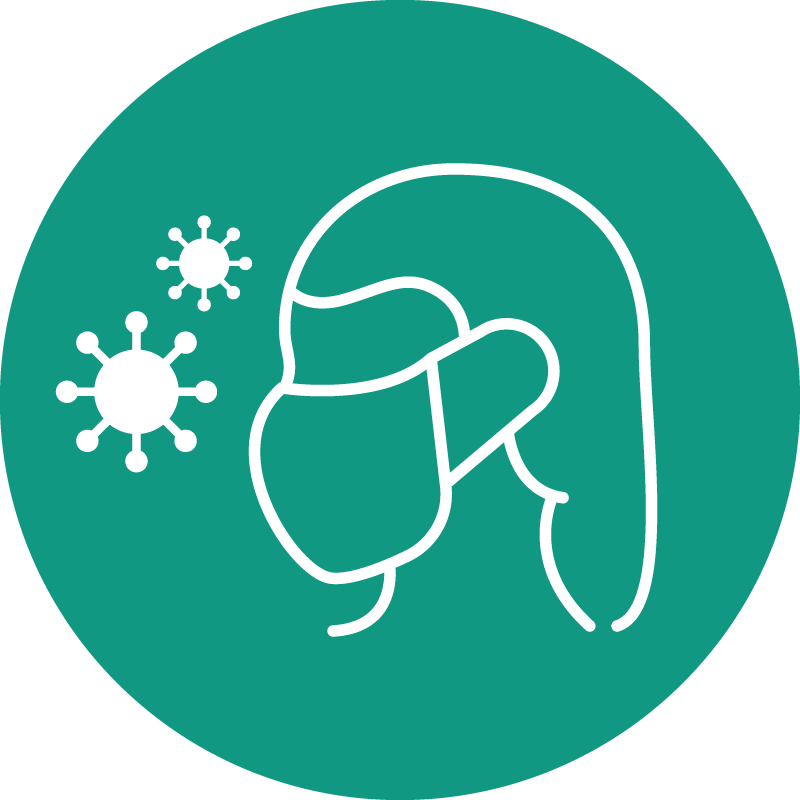
EPRODEP in pandemic times
Since that distant 1992, EPRODEP has experienced institutional and pedagogical growth that has never stopped, thanks to the commitment to the education of the youth of Ciudad Quetzal. This growth has led to the creation of alliances and associations with international donors who have financially supported projects and the institute.
These financings have not been without challenges, especially from the middle of the last decade. In EPRODEP, they recognize how fundamental these are, but on the other hand, they have been forced to adapt to the conditions and requests of the donors. Thus, they have influenced what types of projects to implement and how to develop them.
Despite this institutional challenge, in EPRODEP, it has not meant neglecting education from its central mission. A mission that has been strengthened and innovated as time has passed and projects have been maneuvered.
However, the greatest challenge was still to come. It was 2020, near completing three decades of work and trajectory, a global crisis burst into the community life of EPRODEP. Like the world, the institute was locked down by the COVID-19 pandemic.
Surviving during the pandemic
From urban violence to recruitment difficulties, EPRODEP has faced adversities that it has known to overcome. Now, the COVID-19 pandemic was an entirely unexpected phenomenon that unleashed an institutional crisis in the organization, forcing it into a state of survival.
First, EPRODEP had to improvise new pedagogical methods based on the new social conditions. Social distancing and strict sanitary control became the new social norm that the country took to prevent massive contagion. Thus, virtuality became the educational practice out of necessity and obligation.
Thus, the EPRODEP team urgently devised remote forms of teaching, training as best they could and suddenly in managing digital platforms, purchasing technological devices for students, and applying sanitary regulations at every aspect and level.
This pressing and improvised situation brought latent problems to light and created new ones. The pandemic exposed the limited or non-existent technological state in terms of training and infrastructure in the country. In most public schools, as well as in many private establishments, virtuality became a chaotic and unequal method for teachers and students.
In EPRODEP, it was no different as they found difficulties in educating students due to a lack of technological equipment. Also, within the educational dynamics, they encountered the impossibility of following up on students in their teaching and progress due to the physical separation and the absence of parents for various reasons. From there, they developed a hybrid system, at times remote education and at others face-to-face.
"We were worried that the children would not connect. We received them in reduced groups, in individual schedules first, and then in small groups. There were kids who did not do the activities and guides or did not connect. They did not have parental accompaniment because they had to work."
Another crucial problem was the reduction of funding from donors. The financial dispossession of fundamental alliances was due to funds being redirected to address the unexpected pandemic crisis. Therefore, in EPRODEP, they were forced to let go of a large part of the team and reduce the salary of those who remained. From this lack of funding, a desolate panorama resulted in EPRODEP.
"In 2019 we closed with 18 educators, and in 2021 we ended with 5 educators. Even the need to close the primary or the basics was evaluated. The basics would have been closed due to the population where there have always been fewer."
The general reduction of EPRODEP caused the workload on the surviving team to increase. Not only in terms of more work being attended to but in the urgency to train in so many pertinent subjects for remote education. Also, there were emotional impacts among the team from watching colleagues leave, their economy dwindled, and students in emotional, social, and academic trouble.
Given this pandemic context in EPRODEP, it was unavoidable to consider that education had to be accompanied by humanitarian aid. Especially in Ciudad Quetzal, where precarity and vulnerability are exacerbated by urban inequality. Therefore, they made two specific decisions. First, they reduced fees so as not to add more economic pressure on families. Second, thanks to the alliance with foundations, EPRODEP made three deliveries of food baskets to vulnerable student families and the community.
Losing structure
The pandemic passed like a storm, and in its wake were left emotional, social, and academic ravages that affected both students and teachers at EPRODEP.
From 2022, the EPRODEP team began to more clearly see the emotional burdens weighing on the students. The pandemic turned the coexistence with energetic and curious youths into a reunion with downtrodden, soulless, and hostile adolescents and children. Although the quarantine had ended, the young people had learned to be closed off, hermetic within themselves. And with reason, because in the bosom of their families, there were cases of tragedy due to deaths of relatives, different kinds of abuse, distance from their friends.
"The younger children were frantic; they didn't know how to socialize, they couldn't tolerate each other, they hid, they didn't know how to socialize among themselves. It was complicated for them to adapt to the routine. Their mood was listless, not wanting to participate. The confinement caused anxiety, depression. There are students who never took off the face mask; it wasn't so much for the pandemic as it was the desire to hide all the time. Their self-esteem was very low. The kids came with violence, things they saw on television. This pandemic came to detonate a nuclear bomb."
The pandemic situation disarticulated the trajectory of the institute, the organization of the team, and the pedagogical dynamics with the students. That is, virtuality became part of the pedagogy of EPRODEP in an improvised way, which involved adapting and solving problems of remote teaching and learning. Under this pressing educational modality, coupled with the context of difficult economy and socialization, a "disconnection" occurred in students and families.
In students, the disconnection translated into dependency on the cellphone. In the pandemic, it became the only link with the world, the community, and friendships. However, it was counterproductive in that it detached them from face-to-face interaction and the school dynamic. Therefore, upon returning to classes, the young people carried emotional and social ravages as well as disinterest in education and problems in their academic level.
On the other hand, the disconnection also spread to mothers and fathers. Forced to disconnect from their children's affairs, they had to prioritize work due to the economic necessity aggravated by the pandemic. Without the approach and observation provided by the facilitators at the institute, the young people remained without any supervision when working on their guides and tasks.
Despite all, the EPRODEP team identified a "loss of structure": an institute with an ascending trajectory interrupted, a pedagogy defined by urgent improvisation, and a student body emotionally enclosed and academically diminished.
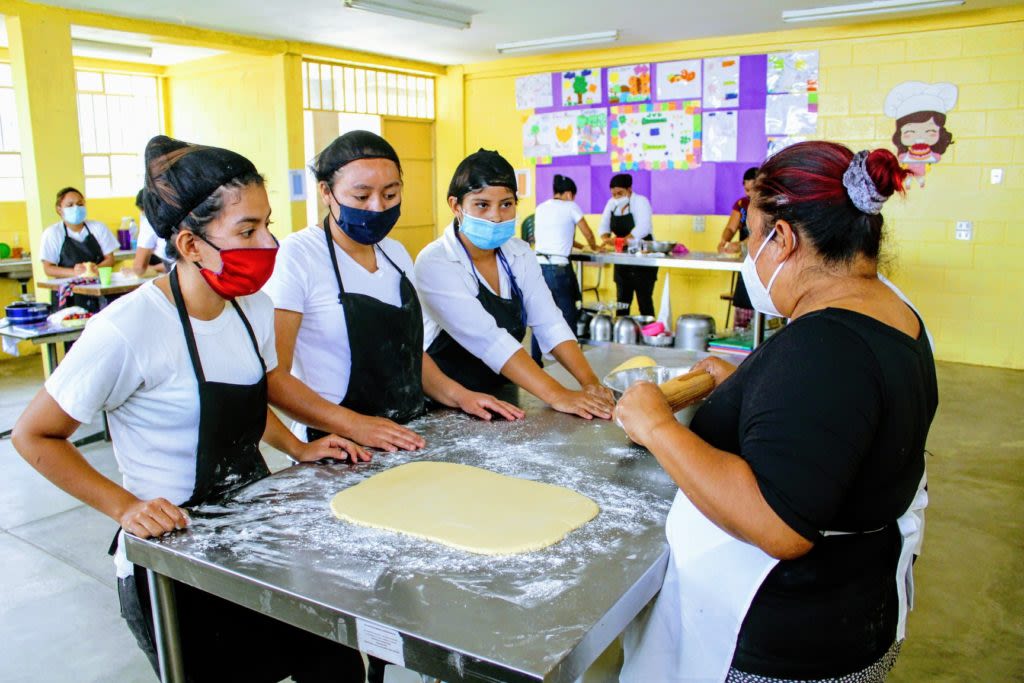
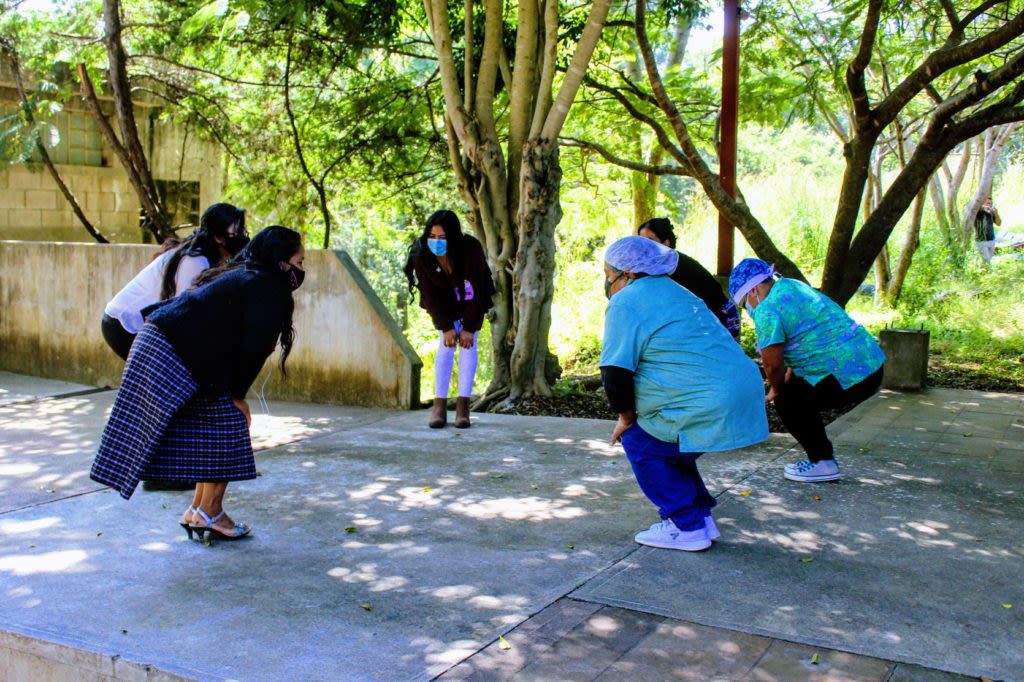
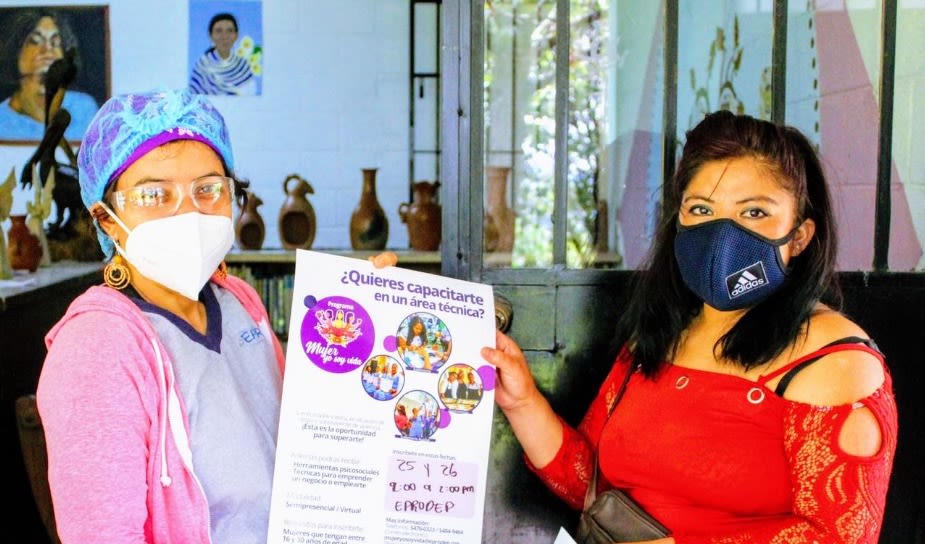
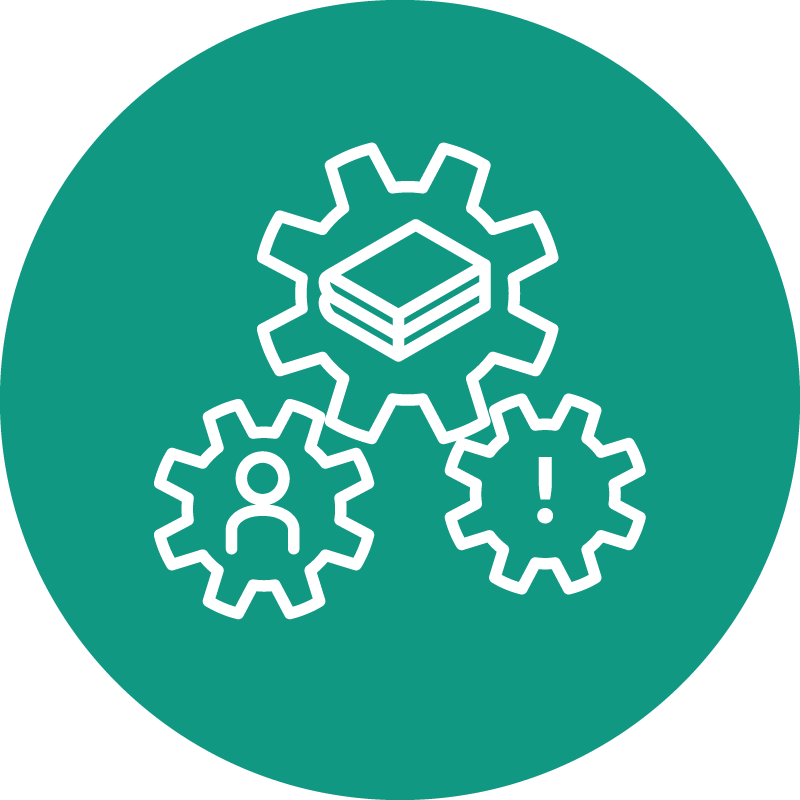
After the pandemic, a reinvented future
In the face of so many pandemic adversities, the EPRODEP team did not give up on its commitment to the youth and the community. Moreover, in the process of overcoming the panorama of the COVID-19 pandemic, they resolved to give way to institutional and pedagogical reinventions.
Regarding the work on the emotionality of the youth, the EPRODEP team implemented in 2023 two methodologies with their particular stamp of horizontality and playfulness, whose goals aim to strengthen coexistence and self-esteem. One of them is the connection circles.
"We do them in primary school; it's a methodological matter. We thought it wasn't good for them to come directly to the classroom. We decided that the welcome should be in the courtyard, an exercise in brain gymnastics: dancing. We ended with a phrase to prepare ourselves for work and socialize and see each other. If an autistic child misses the connection circle, they lose the day. They were like little birds that flew out through the cages, escaping through the holes they found. It was complicated to find them, to have the youth here, others over there. We always do it. It took us time to land it and to land ourselves. We evaluated that the connection circles in the mornings are important."
The other methodology is the communities of life, spaces for conversing and discussing self-esteem, emotional and intelligence health, conflict resolution, and healthy coexistence. Especially important has been the work with the mourning of the youth who did not carry psychological or family accompaniment.
On the other hand, the reinvention of EPRODEP has also passed through the perception of the community. Initially, the institute was qualified with prejudice as a "preventive" because it purposely attended to young people of scarce resources and prey to gangs. Over the years, thanks to its community commitment reflected from the special attention to youth with functional diversity and the humanitarian aid during the pandemic, EPRODEP has achieved a positive reputation. As a facilitator of the institute emphasized, "now the community seeks us out; they know of our work."
The future of EPRODEP seems that it will not leave aside reinvention. Perhaps it has been the historical sign of the institute in these 31 years of trajectory. A motivation for reinvention galvanized by the unbreakable commitment, not even in a global crisis of pandemic, to the education of the youth. Much more notoriety and merit is given to this commitment in a context where urban inequality, violence, and precarity are common, like in Ciudad Quetzal.
Notes
General notes
This product was designed, visualized and written by the Population Council Guatemala team, in collaboration and feedback from the EPRODEP team, for the project Recovering Education in Central America: Activating Networks and Associated Groups (RECARGA).
The images presented were taken from EPRODEP's social networks, shared by its team or photographed by the Population Council Guatemala team. In external cases, the source is indicated.
Specific notes
1. In this historical context of Ciudad Quetzal, several departmental data from San Juan Sacatepéquez are referred to municipal data from Ciudad Quetzal. The reason comes from the lack or limitation of historical and statistical data, specifically for Ciudad Quetzal, in academic archives or state databases. However, we have rescued historical keys that are relevant to the EPRODEP case study.
2. Based on liberation theology, in the CEB, Catholic faith and spirituality are inseparable from the commonly vulnerable, unjust and violent daily life of precarious urban sectors. Religion, then, is a basis for creating awareness of social reality and influencing it. It is Catholicism at the service of the community.
3. On November 27, 2023, the Population Council team held a participatory workshop, lasting six hours, at EPRODEP. 10 people from the EPRODEP team participated.
The objectives of the workshop were, through a guided group discussion and a timeline, a) collect the local history of Ciudad Quetzal, b) document the organizational and educational development of EPRODEP, especially during and after the pandemic and c) understand the educational ecosystem in which the partner is located.
One of the products was this case study in the form of a narrative history, prepared after a process of systematization of the workshop, bibliographic review, statistics, audiovisual archive and interview. The shorthand was a collaboration between Population Council and EPRODEP.
4. Despite the stigmas and adversities, from 1992 to 1997 EPRODEP, with the help of parents and the Spanish Cooperation Agency, built the establishment where the institute currently resides on donated land, on a “little mountain.”
5. In the case of younger students, the EPRODEP team has incorporated methodologies and practices inspired by Jean Piaget's development theory and the Montessori method. They fit with horizontality, since they dismantle the teacher as a figure of authority and educational power and, rather, place the child and student in spaces of freedom, creativity and discovery.
Bibliography
Articulación Continental Comunidades Eclesiales de Base. (2016). El caminar de las Comunidades Eclesiales de Base en América Latina y El Caribe 1960-2016. https://centroamericacmf.org/wp-content/uploads/2016/09/El-Caminar-de-las-Comunidades-Eclesiales-de-Base.pdf
Bermúdez Valle, A. A. (2011). Incidencia Política de las Comunidades Eclesiales de Base en Ciudad Quetzal [Licenciatura, Universidad San Carlos de Guatemala]. http://biblioteca.usac.edu.gt/tesis/28/28_0502.pdf
Celada Villatoro, M. E. (2011). Criminalización, control social y represión de las comunidades en resistencia de San Juan Sacatepéquez, Guatemala y su lucha contra la cementera, 2006 – 2010 [Universidad San Carlos de Guatemala]. https://myrnamack.org.gt/images/stories/fmm/archivos/caso_mack/BECA/tesis-mario-eduardo-celada-villatoro.pdf
Consejo Editorial de Plaza Pública. (2014). Miedo. Plaza Pública. https://www.plazapublica.com.gt/content/miedo-0
Consejo Municipal de Desarrollo del municipio de San Juan Sacatepéquez. (2019). Plan de Desarrollo Municipal y Ordenamiento Territorial. San Juan Sacatepéquez, Guatemala.
Coordinadora Institucional de Promoción por los Derechos de la Niñez. (2019). Organización y funcionamiento de tres Sistemas de prevención a las violaciones de los derechos de la niñez y adolescencia (Chichicastenango, Chisec y Ciudad Quetzal). CIPRODENI. https://www.ciprodeni.org/wp-content/uploads/2019/10/Informe-sistematizacio%CC%81n-de-Sistemas-de-Prevencio%CC%81n-final.pdf
Cristosal. (2021). Desplazamiento forzado interno en Guatemala estudio exploratorio del municipio de San Juan Sacatepéquez.
Domínguez, A., & Pérez Marroquín, C. (2021, noviembre 4). La educación de los niños de la comunidad Ojo de Agua está en vilo por los efectos de la pandemia y el poco acceso a la tecnología. Prensa Libre. https://www.prensalibre.com/guatemala/comunitario/la-educacion-de-los-ninos-de-la-comunidad-ojo-de-agua-esta-en-vilo-por-los-efectos-de-la-pandemia-y-el-poco-acceso-a-la-tecnologia/
García Carrillo, A. C. (2021). Exclusión educativa de la niñez con discapacidades en ciudad Quetzal, San Juan Sacatepéquez, Guatemala. Ciencia Latina Revista Científica Multidisciplinar, 5(6), 12930–12945. https://doi.org/10.37811/cl_rcm.v5i6.1293
Instituto Nacional de Estadística Guatemala. (2018). XII Censo Nacional de Población y VII de Vivienda.
Ministerio de Cultura y Deportes. (2022). Política Cultural Municipal. San Juan Sacatepéquez, Guatemala. https://www.sicultura.gob.gt/wp-content/uploads/2022/09/6-PCM-2022-San-Juan-Sacatepequez-Guatemala.pdf
